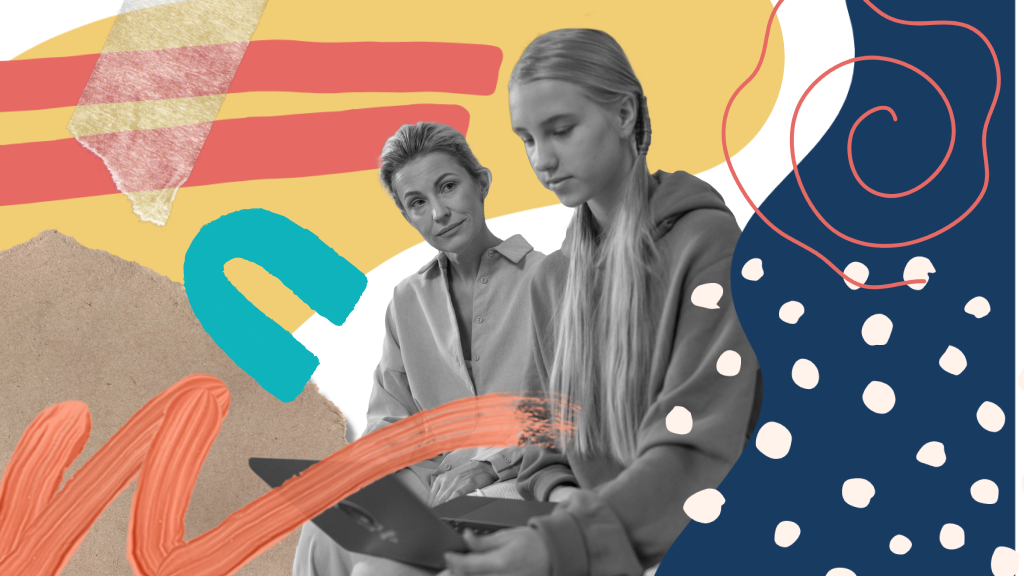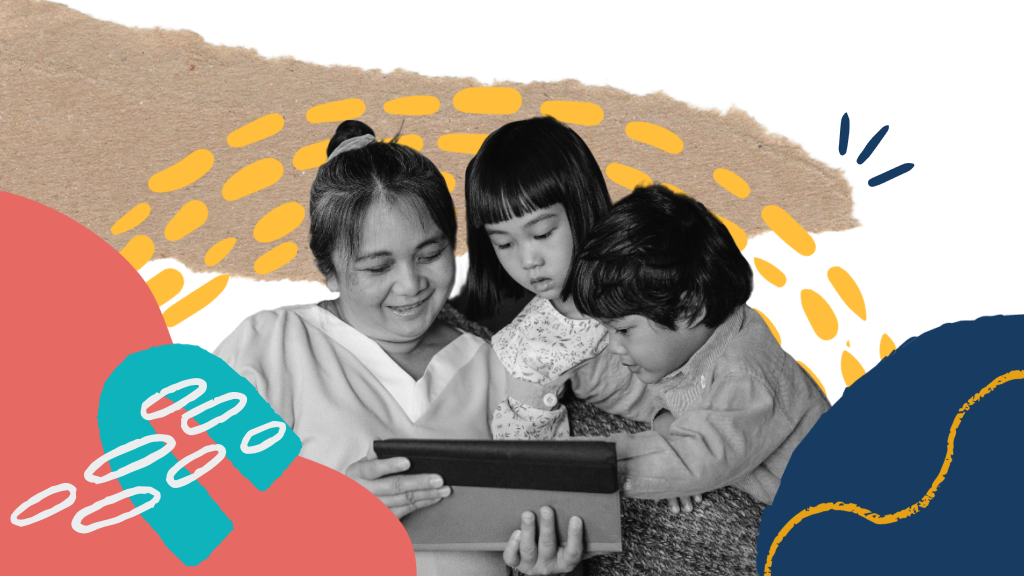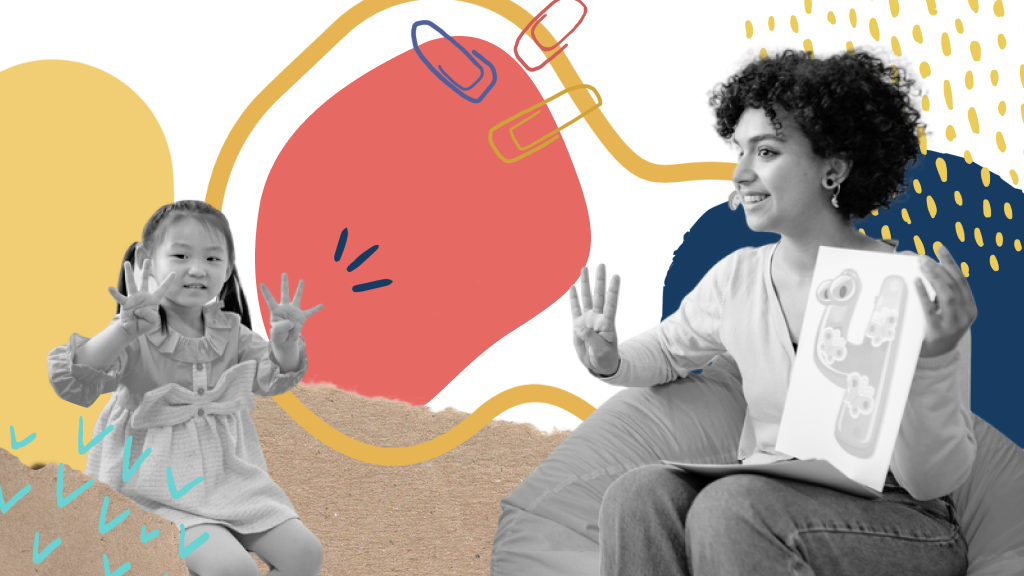The Teacher’s Glossary of SEL and Pedagogical Terms

Social emotional learning (SEL) has become somewhat of a buzzword lately. But why the relatively recent conversation around a concept that has been around for over two decades?
There are tons of reasons behind this, the biggest one being that SEL is now more important than ever. SEL was pivotal in helping both children and adults navigate the tough times and changes in learning that were brought about by the pandemic. That and the fact that the classroom has become more diversified than before, with students from different backgrounds and cultures.
SEL helps students gain the skills they need not only to do well academically, but also to better understand and communicate with others; develop lifelong personal skills; make good, empathic decisions; and foster strong relationships. All this helps set students up for success in school and beyond.
It’s clear that social-emotional learning comes with many benefits, but if you, as a teacher, are going to implement it well, you need to understand what it covers. This is especially important given the misconceptions that are all too common for SEL
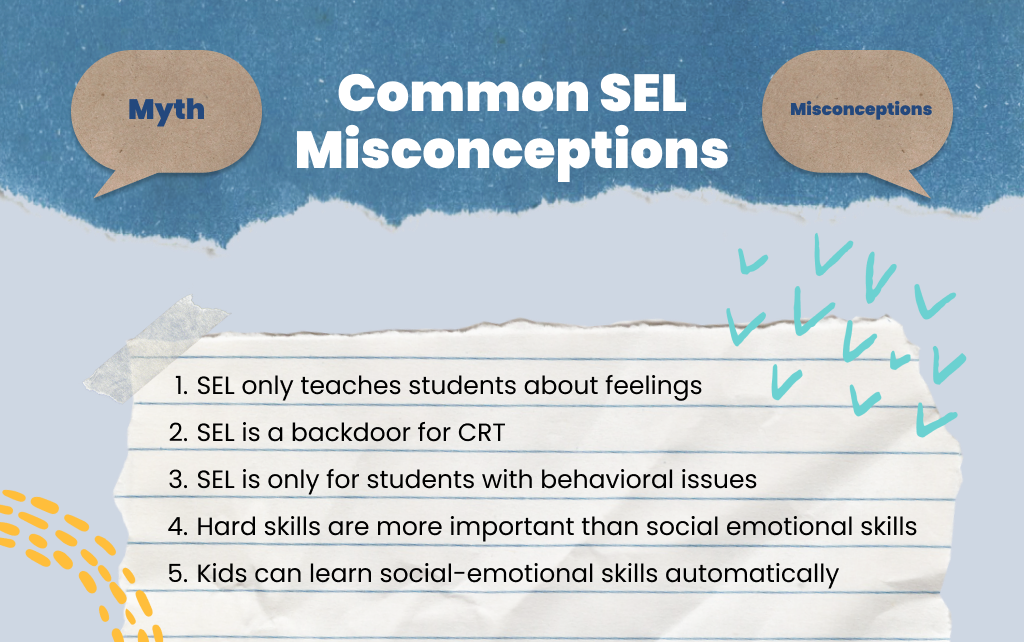
To give you an idea of what social-emotional learning actually is, here are some good examples of how it looks in the classroom:
- Welcoming and inclusion activities such as check-ins that allow students to identify their emotions.
- Incorporating movement breaks during class to help students refresh and reset their brains.
- Encouraging students to undertake journal writing to help them improve their emotional intelligence. For example, asking students to write about a time they wish they could have shown compassion or empathy to others can help them change their behavior in the future.
- Sharing success stories with students to help them push through difficulties.
Besides the misconceptions, SEL may also be tough to understand given that a lot of the theory around education and learning can be a little jargon-heavy, causing a significant amount of confusion and incomprehension around the field.
The following SEL and pedagogical terms glossary will help you clarify the meanings of key terms around social-emotional learning and education in general. Plus, it will help you dispel the fog of ambiguity that surrounds a lot of these terms. Let’s dive in!
The A-Z of Social-Emotional Learning
This section covers a list of key terms related to social-emotional learning.
Autonomy
This is the capacity to make informed decisions independently without any coercion. In the classroom, autonomy can take the form of allowing students to play a more active role in choosing or designing their learning experiences. Giving students this autonomy can help them identify how achieving their goals relates back to their decision making and efforts.
Bullying
Bullying is a type of unwanted aggressive behavior in which someone intentionally causes another person pain, discomfort, or injury (essentially, physical and emotional hurt) repeatedly. It can take many forms, including words, physical contact, and more subtle actions that may be difficult to identify.
Cultural Responsiveness
This refers to the ability to identify with and understand a person’s background, culture, values, and beliefs. In a classroom setting, cultural responsiveness means that, as a teacher, you recognize that all students learn differently due to their background and cultural identity, and you account for this when creating learning instruction. It also means that you help students develop their cultural consciousness and competence, that is, their ability to understand and interact with people from other cultures.
Diversity
Diversity refers to the range of human differences, including but not limited to race, ethnicity, beliefs, age, gender, sexual orientation, physical attributes, and nation of origin. SEL teaches the importance of diversity by highlighting that the people we work with in life won’t always have the same backgrounds as us.
Emotional Literacy
Emotional literacy is the ability to understand your emotions and express them positively, as well as the ability to listen to and empathize with others. When you’re emotionally literate, you’re able to understand and handle your emotions in a way that not only improves your quality of life, but also helps you foster strong, positive relationships.
Empathy
This is the capacity to place oneself in another person’s position to better understand or feel what they are experiencing.
Five Core Competencies
These are the five broad and interrelated components of SEL: self-awareness, self-management, social awareness, relationship skills, and responsible decision-making. These competencies are essentially the foundation on which people can build all other relational skills.
.png)
Flipped Learning
Flipped learning is a teaching strategy that focuses on developing student understanding in class, rather than via lectures. Put simply, the concept flips the traditional model of a classroom — lessons are viewed at home while deeper engagement with concepts and lesson application (which would traditionally have been done through homework) occur in the classroom. This way, students can interact with others, solve problems, and receive support from you, the teacher, as they apply their learnings.
Gender Identity
This is a personal sense of one’s own gender. It’s a person’s internal sense of being either male or female, being neither of these two genders, or being a combination of them.
Health
Health is a state of complete mental, physical, and social wellbeing, and not simply the absence of disease or sickness.
Inclusive Teaching
This is a teaching method that develops educational content and curricula in a way that engages all students regardless of their background, unique abilities, or lived experiences. Inclusive teaching fosters a learning environment in which all students are valued and supported.
Integrity
Integrity is the quality of being honest and having strong moral principles. It includes respecting others, accepting responsibility for your actions, and having the courage to stand up for what’s right.
Justice
Justice is being fair in the protection of rights. As a teacher, this means that you treat all students equitably and distribute all resources fairly.
Kindness
This is the quality of being considerate, friendly, and generous; caring for the people around you and wanting good for them. Activities that improve relationship skills — for example, collaboration, active listening, and fostering empathy — encourage kindness, which, in turn, supports SEL.
Loyalty
Loyalty is a feeling of complete and constant strong support for someone or something. It plays an important social function in the classroom since it enables students to support their educators and each other to create a supportive learning environment.
Motivation
Motivation is what influences a person to do something, take on new challenges, or try new things. As a teacher, students will typically look to you for positive reinforcement and approval, so you can leverage this to motivate them to accomplish tasks and tackle challenges.
Norm
A norm is a shared standard of behavior among a group of people. It’s essential to build positive norms in the classroom as these will help students to work well together and get the most out of their learning experiences. Some examples of general classroom norms include maintaining confidentiality, no name-calling, and being critical while still being respectful.
Obstacle
An obstacle is anything that gets in the way of progress. As an educator in today’s world, you’ll be faced with the daunting task of teaching students faced with many personal and social obstacles on a large scale. SEL will allow you to help the students build their problem-solving skills, enabling them to handle challenges.
Perseverance
Perseverance refers to a person’s ability to continue pursuing a goal despite any obstacles or setbacks they may experience.
Question Stem
A question stem is the core of the question, that is, the task or direction asking you to do what you need to do. In learning, you can use question stems as thinking prompts for class discussions and various forms of assessments; they will help get your students on the right track and encourage them to think more deeply.

Relationship Skills
“Relationship skills” is the ability to form and foster positive relationships, particularly with diverse groups and individuals, using skills such as communication, collaboration, active listening, and conflict resolution. Relationship skills is one of the five core competencies of SEL.
Responsible Decision-Making
Another one of the five core competencies of SEL, responsible decision-making is the ability to make ethical, constructive choices about personal and social behavior based on safety concerns and social norms. Responsible decision-making considers how the consequences of one’s actions will affect their wellbeing and that of others.
Self-Awareness
Self-awareness is the ability to recognize and understand one’s emotions, values, thoughts, strengths, and weaknesses, and how they all influence behavior. This ability is one of SEL’s five core competencies.
Self-Management
This is the ability to effectively manage one’s emotions, thoughts, and behaviors in different situations to achieve one’s goals and aspirations. Self-management is another one of the five core competencies of SEL.
Social Awareness
The SEL core competency of social awareness is the ability to understand and empathize with others, including those from diverse cultures and backgrounds.
Social Emotional Learning (SEL)
SEL is an educational method through which both children and adults acquire and effectively apply the social and emotional attitudes, knowledge, and skills they need to set and achieve goals, manage emotions, create and maintain positive relationships, and make responsible decisions. SEL basically helps people to build skills and connections that help them to thrive in society.
Taxonomy
Taxonomy is a set of hierarchical models that are used to classify learning goals or objectives from simple to complex, and from concrete to abstract.
Universal Design for Learning (UDL)
UDL is a framework for improving and optimizing teaching and learning for everyone based on scientific insights into how humans learn. The framework is built around three core principles:
- Engagement: using learners’ interests and motivations;
- Representation: Offering content in a range of formats; and
- Action and expression: Giving learners diverse outlets to take action and express themselves.
UDL minimizes any physical and mental barriers to learning, ensuring that students with learning differences can thrive and flourish when put in one educational environment.
Values
These are the fundamental beliefs that guide or motivate one’s attitudes and behaviors. In other words, values are the personal characteristics one embodies to guide the type of person they aspire to be, the actions they take, and how they interact with others. Values help us determine who we want to be and what’s important to us.
Wellness
Wellness is the state of having good physical, mental, emotional, and social wellbeing that goes beyond the traditional definition of health. It includes decisions and activities aimed at increasing mental readiness, physical strength and stamina, personal fulfillment, and social satisfaction.
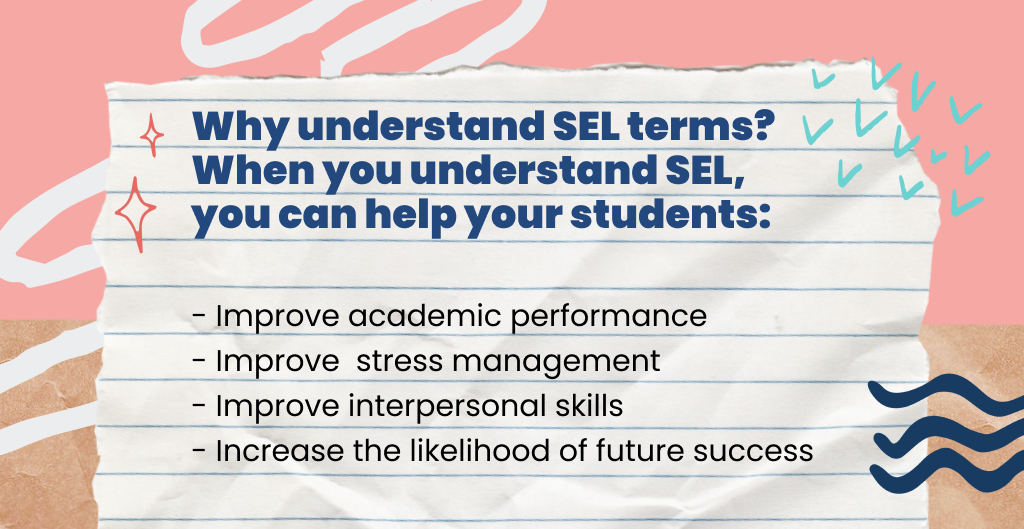
Pedagogical Terms Glossary of Other Health-Related Terms
This section covers terms that are more broadly related to health education.
Addiction
Addiction is the compulsive need for and use of a habit-forming substance or action. It comes in various forms, including physical addiction (addiction to substances that are put into a person’s body) and behavioral addiction (when a person loses control of their actions to engage in detrimental behaviors that result in brief feelings of happiness, e.g., exercise addiction).
Assertive Communication
This is the ability to speak and interact with others in a way that allows you to confidently express yourself without being aggressive. Assertive communication allows you to stand up for your needs and personal boundaries while also accounting for and respecting other people’s opinions, wants, and needs.
Body Image
Body image is the collection of thoughts and feelings a person has about their body, that is, how they see themselves, what they believe about their appearance, and how they physically feel in their body. Depending on how someone sees themselves, body image can be positive or negative.
Caloric Intake
Caloric intake is the amount of energy a person consumes through the food they consume. The intake varies from person to person, depending on their age, weight, and lifestyle factors such as how active they are.
Depression
Depression is a mood disorder that negatively affects how a person feels, thinks, and acts by causing a persistent feeling of sadness and loss of interest. This common illness can interfere with a person’s daily life: causing problems at school or work, ruining relationships, and even leading to physical health problems.
Eating Disorder
An eating disorder is a behavioral condition characterized by persistent abnormal or disturbed eating habits that are associated with distressing emotions and thoughts. Eating disorders can negatively affect a person’s psychological, physical, and social functions.
Food Group
A food group is a collection of different foods that share a similar biological classification or nutritional properties. Examples of food groups include fruits and vegetables, protein foods, fats, and dairy.
Goal-Setting
Goal-setting is the process of identifying what you want to achieve and developing an action plan to motivate and guide you toward the goal. It involves committing your thoughts, emotions, and behaviors to accomplishing the goal.
Human Immunodeficiency Virus (HIV)
HIV is a virus that attacks the cells that help the body fight infection, thus making a person more susceptible to other infections and diseases.
Interpersonal Conflict
This is any type of conflict involving two or more people. It’s a natural outcome of human interaction, and in the classroom, it may develop from poor communication, the use of abusive language, or indiscipline among students.
Label Literacy
Label literacy is the ability to: 1) process and understand nutrition labels, and 2) use that knowledge to make informed food-related decisions, including those on calorie intake.
Metabolism
Metabolism refers to the chemical reactions that happen in the body’s cells to change food into energy. The energy produced through these reactions is used to power the body and enable it to do everything from thinking to moving to growing.
Nutrient-Dense Foods
These are foods that provide the body with health-promoting components, such as vitamins and minerals, without too much added sugars, saturated fat, and sodium.
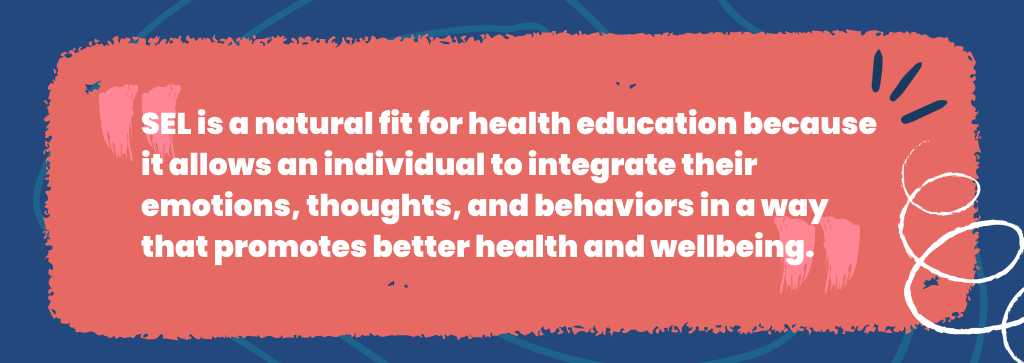
Over-the-Counter
The term over-the-counter is used to refer to medication that can be acquired through ordinary retail purchase, without the need for a prescription or license.
Protective Factor
A protective factor is a condition or characteristic at the individual, family, or community level that reduces the impact of a risk factor, i.e., anything that increases the likelihood of a negative outcome. In other words, a protective factor lowers the probability of a negative outcome.
A genetic predisposition to addiction is one example of an individual-level risk factor, and self-control is an example of a corresponding individual-level protective factor.
Risk Behaviors
These are actions and behaviors that increase the probability of a negative health outcome, either now or in the future. Such behaviors include substance abuse, excessive alcohol consumption, and reckless driving.
Self-talk refers to thoughts or talks directed at oneself. You can also think of self-talk as a person’s inner voice or internal dialogue. An example of positive self-talk is “I can do it.” Conversely, an example of negative self-talk can be something like “Bad things always happen to me.”
Transmission
From a health perspective, transmission refers to the way germs are transferred to the susceptible person.
Unintentional Injury
The word ‘unintentional’ is used to refer to an unplanned injury. The injury happens without any purposeful intent and it typically occurs within a short period, often leading to disability or death. Examples of unintentional injuries include drowning, poisoning, falls, burns, and car accidents.
Vaping
This is the action of inhaling nicotine- and flavoring-containing vapor through the mouth from a device that is designed for this purpose (for example, an e-cigarette). As a teacher, learning about vaping can:
- Help you teach learners about the health risks of this practice;
- Make it easier to recognize when a learner is vaping; and
- Help you find help for learners who are vaping.
Withdrawal
Withdrawal refers to the mental and physical symptoms and effects a person experiences when they reduce their intake of a substance or stop using it altogether. The characteristics of withdrawal vary according to the substance a person was using, but some common ones include headaches, tremors, depression, fatigue, and hallucinations — all these issues can range from mild to life-threatening in extreme cases.
Getting Your Education Terminology for Teachers Right
Before you can start practicing SEL in your classroom, you need to understand how it works. That said, navigating the often-complex terminology surrounding SEL and education, in general, can be a challenge. We hope you find this glossary helpful as you familiarize yourself with the various terms.
Want to take your SEL knowledge to the next level and start incorporating it into your teaching? Lessonbee can take the hassle out of the learning and integration process. We offer a wide range of resources as well as a holistic, culturally-relevant health curriculum that will help your students develop lifelong habits that improve their physical and emotional wellbeing.
Become a Lessonbee member today.
Subscribe to get notified on Lessonbee updates and new blog posts

